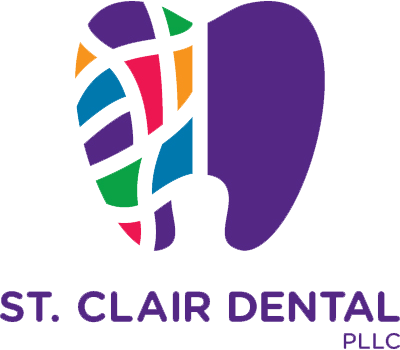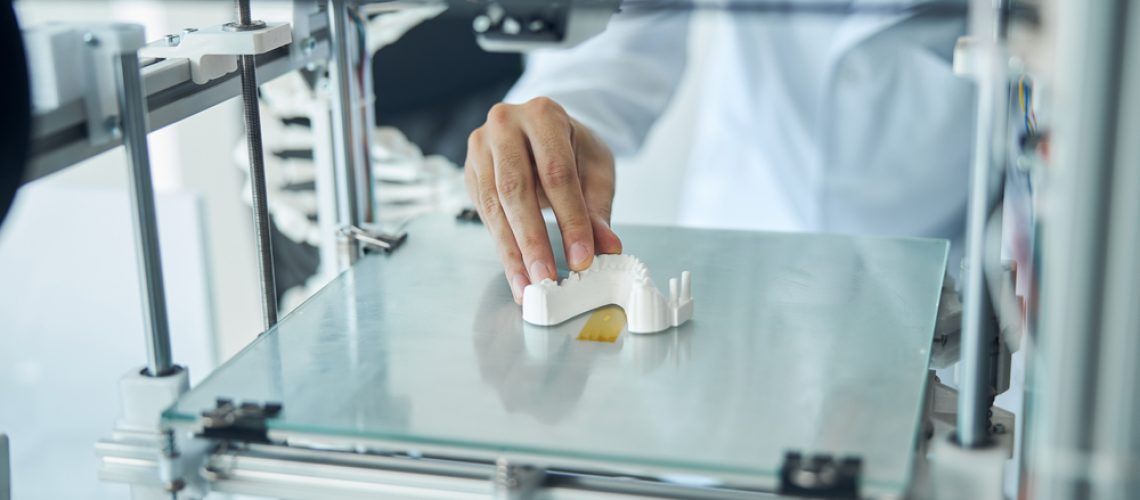In recent years, technological advancements have significantly reshaped various industries, and dentistry is no exception. Among these innovations, 3D printing has made notable strides, fundamentally altering the way dental care is provided. At St. Clair Dental in Granbury, TX, Dr. Maureen Karl is at the forefront of this transformation, utilizing 3D printing to enhance patient care through precision, speed, and customization. Here, we explore the many ways 3D printing is advancing dental applications and improving patient experiences.
What is 3D Printing in Dentistry?
3D printing, also known as additive manufacturing, is a process that creates three-dimensional objects by layering materials based on digital models. In dentistry, this technology has allowed for the development of highly precise and customizable dental solutions. Unlike traditional methods that often rely on molds and extensive lab work, 3D printing streamlines the process, allowing dental professionals to design and manufacture restorations, aligners, and more within their practices.
Enhanced Precision and Customization
One of the most significant benefits of 3D printing in dentistry is the unparalleled precision it offers. Traditional dental molds can occasionally yield less-than-perfect results due to issues with shrinkage, warping, or other variables. With 3D printing, however, the entire process is digital, meaning there’s little room for human error. High-resolution scanning and printing allow dentists to produce restorations and prosthetics that perfectly match each patient’s unique anatomy, resulting in better fits and, ultimately, more comfortable and effective outcomes.
Speeding Up Treatment Times
Gone are the days when patients had to wait weeks for a crown or bridge to be fabricated and fitted. With in-office 3D printers, dental practices like St. Clair Dental can produce crowns, bridges, veneers, and aligners in as little as one appointment. This efficiency doesn’t just benefit the dental team—it also translates to greater convenience for patients, reducing the need for multiple visits and lengthy procedures. For example, when a patient needs a dental crown, traditional methods can take weeks to complete. With 3D printing, this process can often be completed in a single day, with the patient leaving the office with a fully functional, customized restoration.
Reduced Costs and Waste
In the past, the cost of producing custom dental appliances could be prohibitive for some patients. By integrating 3D printing into the practice, St. Clair Dental in Granbury can reduce expenses associated with outsourcing manufacturing to third-party labs. Additionally, 3D printing minimizes waste by using only the required amount of material for each item, making it a more environmentally friendly option. These cost savings can then be passed down to patients, making advanced dental care more accessible.
Versatility in Dental Applications
The versatility of 3D printing has made it indispensable across a range of dental applications. Here are some of the areas where 3D printing is making a substantial impact:
- Implants and Crowns: 3D printing enables the production of custom-fit crowns, bridges, and dental implants with precision that matches each patient’s exact specifications.
- Clear Aligners and Retainers: Orthodontic treatment has been revolutionized by 3D printing, allowing for quick production of aligners and retainers that fit comfortably and guide teeth effectively.
- Surgical Guides: For complex procedures such as implant placement, 3D-printed surgical guides help improve accuracy by ensuring the correct angulation and depth.
- Dentures: Traditional denture creation can be labor-intensive and time-consuming. 3D printing has simplified this process, allowing for faster production of customized, high-quality dentures.
- Educational Models: 3D printing also allows dentists to create detailed models of a patient’s oral anatomy. These models can serve as educational tools, helping patients understand their treatment plans more clearly.
Enhanced Patient Comfort and Satisfaction
At St. Clair Dental, Dr. Maureen Karl’s use of 3D printing isn’t only about efficiency—it’s also about improving the patient experience. Traditional methods, such as taking dental impressions, can be uncomfortable and messy for patients. Digital scans, which are used to create 3D-printed models, eliminate the need for these outdated techniques, providing a more pleasant and stress-free experience.
Additionally, the precision of 3D-printed restorations often leads to fewer adjustments. Because the fit is so exact, patients are less likely to experience discomfort, and the need for follow-up visits is minimized.
A Future of Bio-Printing and Regenerative Dentistry
3D printing in dentistry is evolving, and the future holds even more exciting possibilities. Research is being conducted on bio-printing, which involves using cells and other biological materials to create living tissues. For dentistry, this could mean a future where damaged teeth or gum tissue could be regenerated, offering patients the chance to regain their natural oral structures without synthetic replacements. While bio-printing is still in its experimental stages, the advancements in 3D printing technology suggest that regenerative dentistry may not be far off.
The Impact of 3D Printing on Infection Control and Hygiene
In a post-pandemic world, infection control has become a major priority for healthcare providers. With in-house 3D printing, St. Clair Dental can reduce the need for outsourcing dental appliances, thereby decreasing potential contamination risks associated with shipping and handling. Additionally, 3D-printed devices can be produced in a sterile environment and utilized immediately, further enhancing patient safety.
Choosing the Right Dental Practice for Advanced Care
When seeking advanced dental care, it’s essential to choose a practice that stays current with technological innovations. Dr. Maureen Karl at St. Clair Dental is dedicated to providing patients in Granbury, TX, with the highest standards of care by leveraging state-of-the-art 3D printing technology. This commitment ensures that each patient receives customized, effective, and comfortable treatments that meet their individual needs.
Embracing the Future of Dentistry with Confidence
3D printing is transforming the landscape of dental care, offering unprecedented benefits for both patients and providers. At St. Clair Dental, Dr. Karl is leading the way in Granbury, TX, using this technology to make dental treatments faster, more precise, and more affordable. As 3D printing continues to evolve, patients can look forward to an even brighter future for dental health, where treatments are not only highly effective but also patient-centered and convenient.
The advancements in 3D printing signal a new era in dental care, one defined by efficiency, customization, and enhanced patient outcomes. St. Clair Dental, under the guidance of Dr. Maureen Karl, remains committed to adopting these advancements to improve patient experiences and set a new standard in dental care. As technology progresses, patients in Granbury, TX, can rest assured that they are receiving cutting-edge treatment that emphasizes both quality and comfort.
Sources:
- Bhargav, A., Sanjairaj, V., Rosa, V., Feng, L. W., & Fuh, Y. H. J. (2018). Applications of Additive Manufacturing in Dentistry: A Review. Journal of Biomedical Materials Research Part B: Applied Biomaterials.
- Alharbi, N., Wismeijer, D., & Osman, R. B. (2017). Effects of Build Direction on the Mechanical Properties of 3D-Printed Complete Coverage Temporary Dental Restorations. Journal of Prosthodontic Research.
- Dawood, A., Marti Marti, B., Sauret-Jackson, V., & Darwood, A. (2015). 3D Printing in Dentistry. British Dental Journal.

